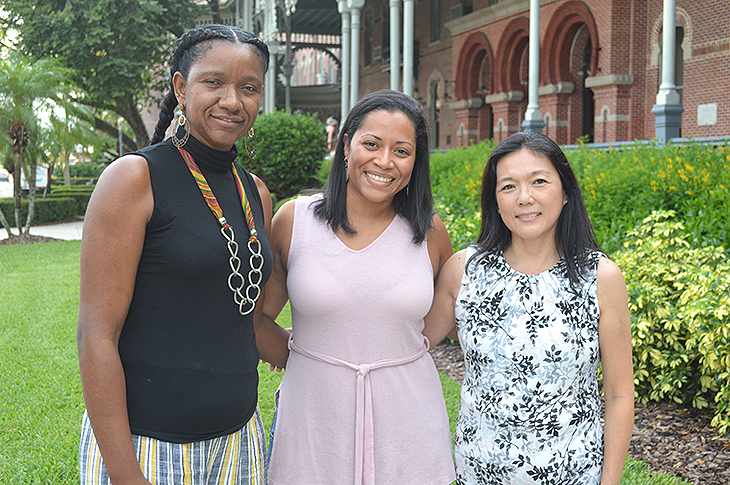Contact us
401 W. Kennedy Blvd.
Tampa, FL 33606-13490
(813) 253-3333
Since February, Associate Professor of Education Enilda Romero-Hall and two graduate students, Adriana Vianna M.S. ’20 and Erika Petersen M.S. ’19, have been discussing how to help immigrants adapt to the quirks of American life. At the end of this month, the team will present New Beginnings – a graphic novel for English-language learners (ELL) – at the 2019 Open Education Conference in Phoenix, AZ.

Associate Professor of Education Enilda Romero-Hall (center) and two graduate students, Adriana Vianna M.S. ’20 (left) and Erika Petersen M.S. ’19, have created a graphic novel to help English-language learners navigate American culture.

The <a href="https://www.flipsnack.com/E68BC86D75E/new-beginnings-fhc8bla3x/full-view.html">graphic novel</a> — which is a narrative that is presented like a comic, except in book form — focuses on teaching common abbreviations, as well as American aspects of life that may not be familiar to an immigrant.

The graphic novel is set to be published by the time the team heads to the Open Education Conference at the end of this month. It will be available online and also on mobile devices.
More UT News